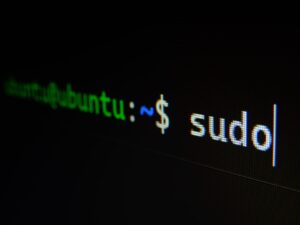Every application, whether it’s a web or mobile application, requires a database to store its information. Databases hold critical data for individuals and organizations, such as blog content or user records. If you’re using WordPress, you’re managing your database with MySQL or MariaDB, and the mysqldump utility is a key tool for creating reliable backups.
This guide will help you master mysqldump, equipping you with the knowledge to back up your data efficiently. With mysqldump, you can back up database schemas, specific table data, entire databases, or even multiple databases simultaneously.
What is mysqldump?
mysqldump is a command-line utility provided by MySQL and MariaDB for creating database backups. It allows you to export data and schemas in SQL format, which can later be used to restore the database.
Syntax of mysqldump
The basic syntax of the command is:
mysqldump [options] [database_name [table_name ...]]In many tutorials, you’ll see > at the end of the command. This operator redirects the output of mysqldump to a file. For instance:
mysqldump -uusername -p database_name > backup.sqlThis command saves the backup in the file backup.sql. Without the > operator, mysqldump will simply display the output in the terminal.
Common Backup Tasks Using mysqldump
1. Backing Up a Single Database
To back up a single database and save it in an SQL file, use the following syntax:
mysqldump -uusername -p database_name > backup_file.sqlExample: Back up a database called test_db into a file named test_backup.sql:
mysqldump -uroot -p test_db > test_backup.sql2. Backing Up All Databases
To back up all databases on the server, use the --all-databases option:
mysqldump -uusername -p --all-databases > all_databases_backup.sqlThis command saves the entire server’s database content into a single file.
3. Backing Up Multiple Databases
If you want to back up specific databases, use the --databases option and list the database names:
mysqldump -uusername -p --databases db1 db2 > multiple_databases_backup.sqlExample: Back up database1 and database2:
mysqldump -uroot -p --databases database1 database2 > backup.sql4. Exporting Database Schema Only
To back up just the schema (structure) without the data, use the --no-data option:
mysqldump -uusername -p --no-data database_name > schema_backup.sqlExample: Back up the schema of example_db:
mysqldump -uroot -p --no-data example_db > schema_backup.sql5. Backing Up a Remote Database
To back up a database on a remote server, use the -h option to specify the server’s IP address or hostname:
mysqldump -uusername -p -hserver_ip database_name > remote_backup.sqlExample: Back up remote_db from the server 192.168.1.100:
mysqldump -uroot -p -h192.168.1.100 remote_db > remote_backup.sql6. Backing Up Specific Tables
To back up specific tables from a database, list the table names after the database name:
mysqldump -uusername -p database_name table1 table2 > tables_backup.sqlExample: Back up the users and orders tables from shop_db:
mysqldump -uroot -p shop_db users orders > tables_backup.sql7. Ignoring Specific Tables
To back up an entire database while excluding certain tables, use the --ignore-table option:
mysqldump -uusername -p database_name --ignore-table=database_name.table1 --ignore-table=database_name.table2 > backup.sqlExample: Back up example_db while excluding the logs table:
mysqldump -uroot -p example_db --ignore-table=example_db.logs > backup_without_logs.sqlKey Tips for Efficient Backups
- Compression: To save space, you can compress the backup file using gzip:bashCopiar código
mysqldump -uroot -p database_name | gzip > backup.sql.gz - Automated Backups: Use
cronjobs to schedule regular backups. - Remote Storage: Store backups on a remote server or cloud storage to ensure redundancy.
- Verify Backups: Always test your backups by restoring them on a test server.
Conclusion
The mysqldump utility, available in both MySQL and MariaDB, is a powerful tool for managing database backups. Its flexibility allows you to perform a variety of tasks, from exporting schemas to backing up multiple databases. By mastering the options and syntax covered in this guide, you can confidently protect your data and ensure business continuity.
To learn more about the options available, consult the manual:
man mysqldumpWith this knowledge, you’re ready to handle your backup needs with ease and reliability!











